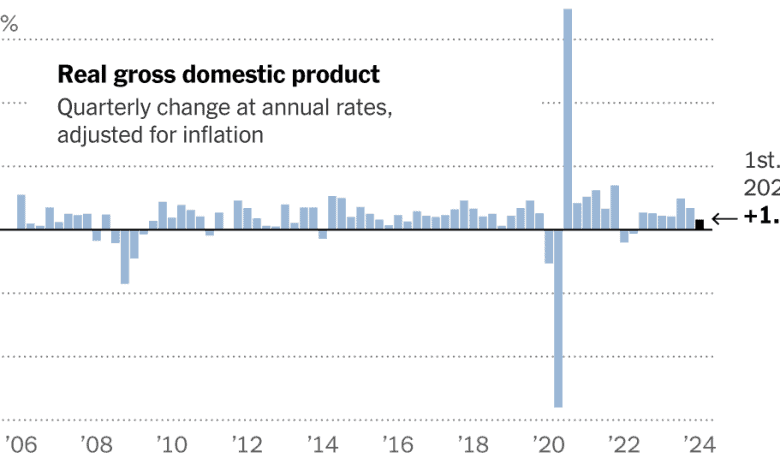U.S. Growth Slowed in First Quarter, but Inflation Remained a Bug

The U.S. economy remained resilient early this year, with a strong job market fueling robust consumer spending. The trouble is that inflation was resilient, too.
Gross domestic product, adjusted for inflation, increased at a 1.6 percent annual rate in the first three months of the year, the Commerce Department said on Thursday. That was down sharply from the 3.4 percent growth rate at the end of 2023 and fell well short of forecasters’ expectations.
Economists were largely unconcerned by the slowdown, which stemmed mostly from big shifts in business inventories and international trade, components that often swing wildly from one quarter to the next. Measures of underlying demand were significantly stronger, offering no hint of the recession that forecasters spent much of last year warning was on the way.
“It would suggest some moderation in growth but still a solid economy,” said Michael Gapen, chief U.S. economist at Bank of America. He said the report contained “few signs of weakness overall.”
But the solid growth figures were accompanied by an unexpectedly rapid acceleration in inflation. Consumer prices rose at a 3.4 percent annual rate in the first quarter, up from 1.8 percent in the final quarter of last year. Excluding the volatile food and energy categories, prices rose at a 3.7 percent annual rate.
Taken together, the first-quarter data was the latest evidence that the Federal Reserve’s efforts to tame inflation have stalled — and that the celebration in financial markets over an apparent “soft landing” or gentle slowdown for the economy had been premature.




